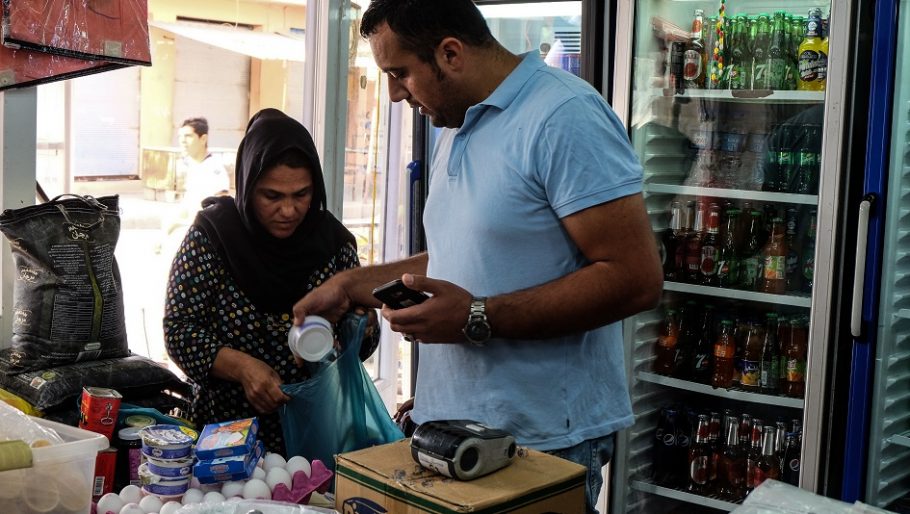How Will Financial Assistance Look in 2030? Here are your thoughts so far

In 2030, humanitarian crises and the ways in which humanitarian needs are met will look very different from today. The role of financial assistance is growing: it is estimated that $4.8 billion was delivered in cash and voucher assistance (CVA) in 2018, as well as $686 billion in remittances, while 2.5 billion people in developing countries are covered by social safety nets. As a network of more than 80 organisations delivering CVA, representing a significant cross section of the humanitarian sector, the CALP Network has a crucial role to play in ensuring its members are considering future challenges and opportunities and working together to best meet the needs of crisis-affected people now and in future.
Earlier this year the CALP Network launched a collaborative process to envision how financial assistance might evolve over the next decade. The first stage of this process has involved working with the Inter-Agency Research and Analysis Network (IARAN), to develop a range of scenarios describing how financial assistance might look in the future. The CALP Network will then work with the network to understand what this might mean for end users of financial assistance and for humanitarian actors – and therefore, the implications for members’ strategic planning, asking how we can collectively continue to deliver the most value to people in need in a fast-changing environment.
Where are we now?
The first stage of this process involved a crowdsourcing exercise in which more than 70 actors from the humanitarian sector and beyond shared their feedback on the factors and tools that would be most influential in shaping the future of financial assistance. These inputs, supplemented with interviews with relevant experts and futures thinkers, were analysed by a group of experts to develop a set of hypotheses. These hypotheses covered themes including the role of governments and the private sector, digital identity and beneficiary data, mobile technology and internet access, use of financial services, population movements, and funding levels for financial assistance. We presented these hypotheses at a side event during the Grand Bargain Cash Workstream meetings in May.
Based on these hypotheses, IARAN developed a series of draft scenarios for the future of financial assistance based on scenarios set out in their 2018 report, The Future of Aid, INGOs in 2030. These included scenarios characterised by restricted access, an erosion of end-user trust, and a fragmented approach to data collection, as well as more optimistic scenarios where financial assistance is approached collaboratively, facilitated by new technology.
On 25 and 26 July, we brought together more than 40 actors spanning humanitarian, development, private sector and academic backgrounds in Amman, Jordan. These participants gathered to review the draft scenarios in detail over a two-day workshop, unpacking each of these to understand the potential implications for end-users of financial assistance and for humanitarian actors.
Key takeaways included:
- The need to shift approaches to monitoring and evaluation and feedback loops so that change in the humanitarian system is driven by recipient preferences and experiences, not by aid agencies’ preferred ways of working.
- The understanding that humanitarian CVA is part of a much wider landscape of financial flows to crisis-affected people, including remittances, social protection, and financial inclusion efforts. Being a constructive player in this landscape means building stronger partnerships with governments and private sector actors and understanding how we can best add value.
- There are some hugely disruptive factors in the near future which we need to plan for, in particular the predicted surge in climate migrants (163 million additional migrants by 2050) and the potential unforeseen impacts of new technologies.
- Understanding the risks and opportunities that come with the increased availability and use of end-users’ data is an urgent task – our understanding and ways of working are lagging far behind advances in the delivery mechanisms we are using and engaging with.
- The need to maintain a trusting relationship between aid providers and recipients is critical. We need to better understand how to manage this when non-humanitarian actors are delivering assistance, as well as maintaining principled, quality assistance under any scenario.
Listen to participants share their takeaways from the Amman event in the videos below.
This event was followed by a webinar on 31 July, where an additional 40 participants from around the world shared their feedback on the scenarios. Further insights emerged from the rich discussion, including:
- The need to widen the scope and definition of humanitarian actors and tools, and to work proactively and in a more joined up way with government and private sector actors, particularly in advocacy efforts.
- The need to build and reinforce trust – not just between recipients and organisations delivering assistance, but among traditional humanitarian actors, governments and the private sector.
- The need for all of this work to be driven and informed by recipient voices and preferences, starting now. This cannot wait for the future.
Watch the full webinar discussion below.
What happens next?
the CALP Network and IARAN will be working together over the coming weeks to bring together these insights in a report and a series of launch events. The report, which is due to be published in October, is intended to support humanitarian actors in their mid to long term planning, so that they can be ready to shape a future in which timely and high quality assistance is delivered to people affected by crises.
Main image: Amy Christian, Oxfam


